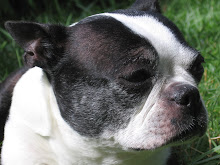Back in Florence for the day; these days are going by so fast it’s hard to believe the trip is almost over.
We start our day in our own neighborhood, walking to the nearby church of Santa Maria Novella., but darn it, it isn’t open yet to the public. We make a detour into the Officina Profumo, a shop that sells perfumes and other aromatherapy products that were originally produced by the friars of Santa Maria Novella.
Our itinerary says that we next go on to the Ponte Vecchio, but we tell Elisabetta that we’ve already seen it. Elisabetta quickly adapts, leading us through narrow alleys and streets to show us some other interesting spots. She takes us to the church of Santa Trinita. It’s smaller than many of the other churches we have seen, but it has incredibly beautiful chapels. The church itself seems untouched by time and has a quieter, more intimate atmosphere.
Next, we visit the Palazzo Davanzati. This is a medieval residence that has been restored to look as it might have during the Renaissance. Unlike the other palazzi we have visited, this one has the real look of a lived-in house. When we walk in, Elisabetta says to me, “look up”. When I do, I see that the staircases look like something out of an M.C. Escher work. Incredible.
We also squeeze in a quick look at the Orsanmichele, a church converted from a former grain market. This was a trade church, where the various trade groups competed to express their devotion through commissioning statues of representative saints.
There’s still more to see, so Elisabetta leads us across the river to the Oltr’arno district. This district has more of a neighborhood feel, with fewer tourists filling the streets. We walk past Santo Spirito, getting a glimpse of the beautiful cloistered garden. The piazza in front has a lovely fountain, and a few street vendors nearby are selling things like honey and prosciutto. This feels like we’re in a true Italian neighborhood. We finally arrive at the Brancacci Chapel, famous for—guess what!—its frescos featuring the life of Saint Peter.
After all this walking and all these churches, we are ready for a break. We have lunch at il Cantinone. Once again, I choose something I would never eat at home: Degustazione di formaggi pecorini toscani con mostarda di fichi e miele al tartufo—also known as “Assorted mix Sheep’s milk cheese with truffle honey and fig mustard”, and let me tell you, it was good. I also try pappa al pomodoro, a tomato soup thickened with bread. The flavor is really intense and spicy and the texture of the soup is almost, but not quite, like a puree. Add some chianti and tiramisu for dessert, and I’m one satisfied diner.
Reinvigorated, we make our way to the nearby Palazzo Pitti. Yet another Medici palace, and in some ways the Florentine version of Versailles, the Pitti is now an art museum, but one that showcases the artworks that the Medici collected over the years. The art is arranged not by style or era or artist, as it might be in a traditional museum; instead, the pieces are displayed as hung by the previous generations of Medici. Elisabetta and I debate the merits of Renaissance versus Baroque art, but she agrees with me that the Rubens canvas is pretty spectacular. I also find it amusing that the section of the museum devoted to “modern” art begins with artwork from the 18th century.
At the end of our tour, we say goodbye to Elisabetta, and I feel very sad. I’ve so enjoyed spending time with her; it feels like I’m saying goodbye to a new friend.
That evening, the three of us go to dinner at I’Brindellone, a neighborhood trattoria that Elisabetta recommended. When we show the cab driver where we want to go, he tells us he’s eaten there too—how can you go wrong with the local cab driver’s recommendation? Florence and I decide to be brave and order the bistecca fiorentina. This is a local specialty—a giant steak from a certain breed of cattle. The minimum size order at our restaurant is 1 kg, or 2.2 pounds. Oof. The steak arrives, and it is enormous—at least two fingers thick, filling the entire dinner plate. It is served very rare (I’m usually a medium-well kind of steak eater), but I do my best. And yes, it is delicious.





